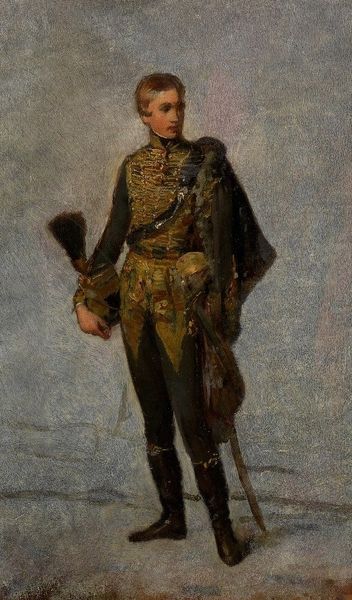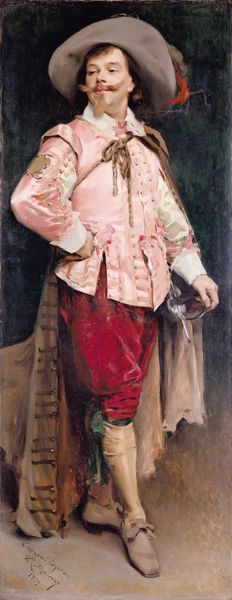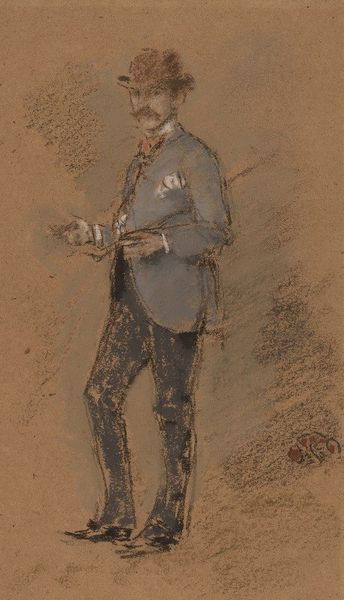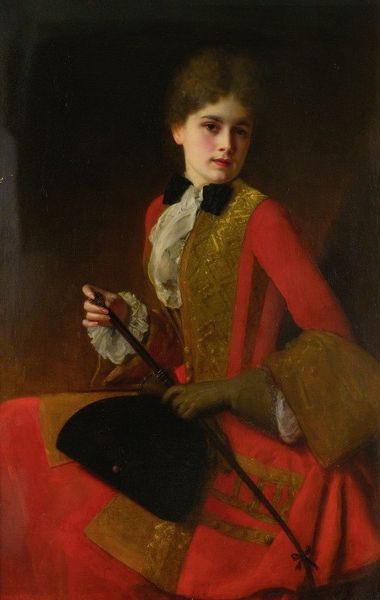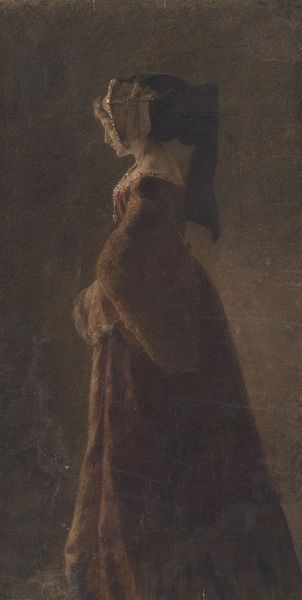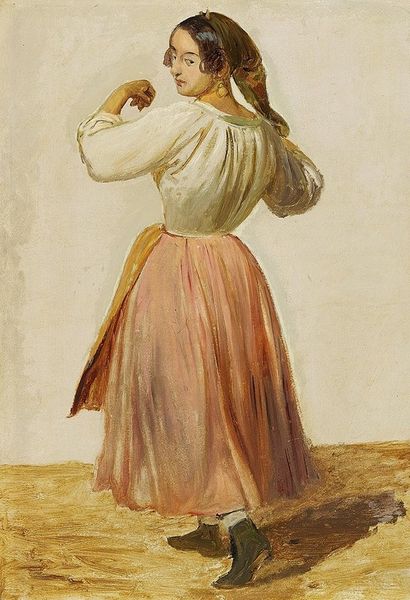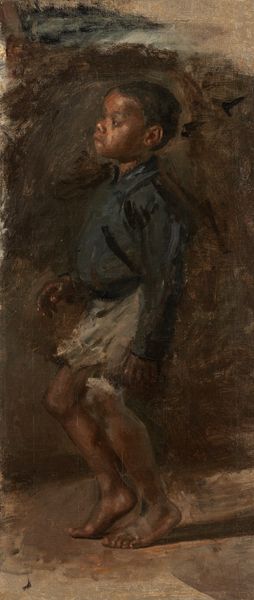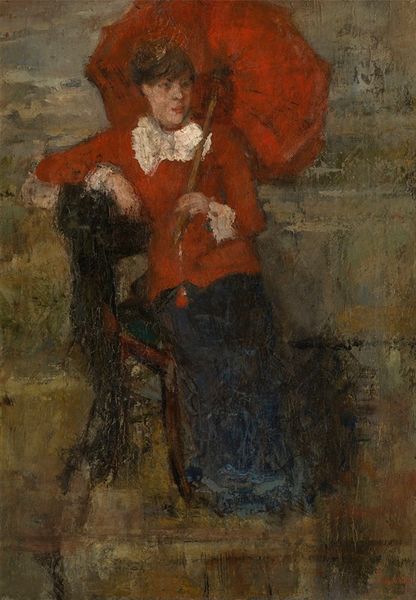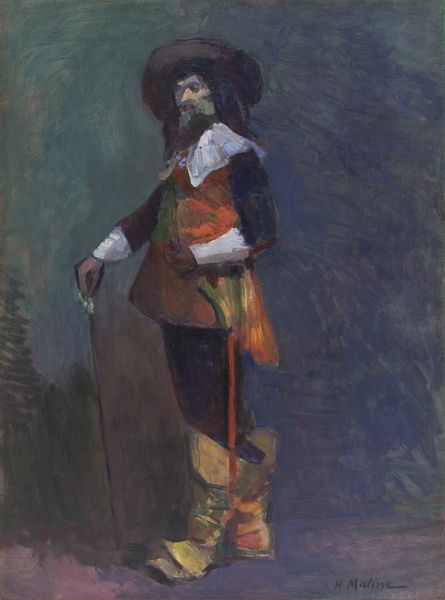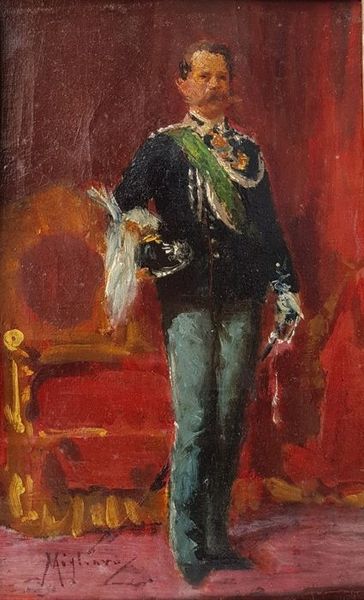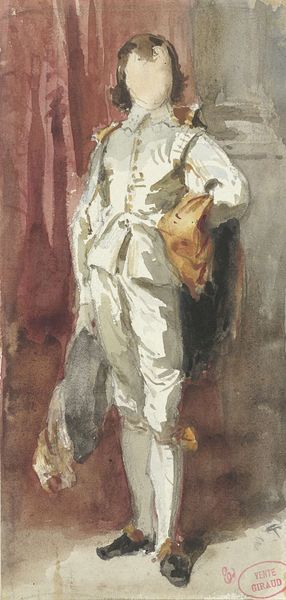
Copyright: Public Domain: Artvee
Editor: Jean-Paul Laurens' "La voûte d'acier, silhouette du marquis de Lafayette," painted in 1889, appears to be rendered in oil. The portrayal of Lafayette is surprisingly stark against a plain background; it feels almost like he's a ghost from the past being summoned. How do you interpret this piece? Curator: That's a fascinating reaction. Considering the era, late 19th century, and Laurens' known academic style which romanticized French history, particularly military figures. This image isn't just about Lafayette the man. How do you think this representation reflects France's own self-image and aspirations during that period, nearly a century after the Revolution? Editor: I guess the deliberate simplification, almost starkness, contrasts sharply with the grand history paintings of the Revolution I've seen. Is he deliberately demystifying a historical figure to create a new kind of public hero, less mythical and more… accessible? Curator: Precisely. It is less about glorifying a figure and more about aligning with republican ideals: duty, discipline. Notice the figure’s profile; it suggests that it's reproducible; easy to print as portraits for general citizenry. Also, his rigid posture; How can the French public make their own hero based on his stance, and the fact that he contributed to the formation of republican ideals for all of humankind? What's most telling, would you say, is the title: "silhouette." Editor: I see what you mean; it’s a symbolic outline for people to fill in with their own interpretations, their own values. He becomes more of a symbol than a specific, unattainable hero. I now view the painting as something akin to the symbolic image used in political campaigns or for social movements. Thanks! Curator: You've captured the nuances. This piece serves not only as historical record but also speaks volumes about the active construction of public memory.
Comments
No comments
Be the first to comment and join the conversation on the ultimate creative platform.


